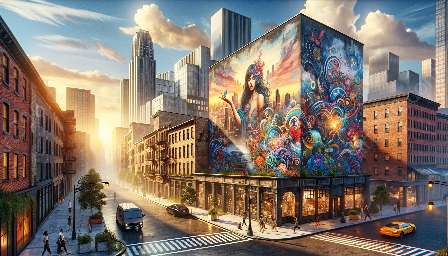Street art has become a significant form of artistic expression across various global contexts, presenting a unique set of challenges and opportunities. This article explores the complexities and possibilities of creating street art in different cultural and geographical settings, incorporating diverse street art techniques and styles.
Understanding Street Art
What is street art?
Street art encompasses a broad range of art forms created in public spaces, often outside the confines of traditional art institutions. It includes murals, graffiti, stencil art, and other forms of unauthorized artistic expression.
Features of street art:
- Visible to the public
- Controversial at times
- Reflects social and political messages
Challenges of Creating Street Art in Different Global Contexts
Legal and Social Acceptance:
In many contexts, street art exists in a legal gray area, leading to potential conflict with local authorities and property owners. The legality and social acceptance of street art vary significantly across different countries and cities.
Cultural Sensitivity:
Artists must be mindful of local cultural norms and sensitivities when creating street art in different global contexts. What may be acceptable in one place could be offensive or inappropriate in another, requiring a nuanced approach to artistic expression.
Language and Communication:
When creating street art in diverse global contexts, artists face the challenge of communicating their messages effectively across language barriers. Visual storytelling becomes crucial in ensuring that the intended message resonates with the local audience.
Opportunities of Creating Street Art in Different Global Contexts
Cultural Exchange and Collaboration:
Street art provides a platform for cultural exchange and collaboration, allowing artists to engage with diverse communities and share perspectives across different global contexts. Collaborative mural projects, for example, can foster cross-cultural understanding and creativity.
Social Advocacy and Expression:
In many parts of the world, street art serves as a powerful tool for social advocacy and expression. Artists have the opportunity to address local and global issues, raise awareness, and provoke thought through their artwork.
Adaptation of Techniques:
Creating street art in different global contexts invites artists to adapt their techniques and styles to resonate with local aesthetics and cultural narratives. This process of adaptation can lead to the evolution and enrichment of street art practices.
Exploring Street Art Techniques
Murals:
Murals are large-scale artworks created directly on walls or other surfaces. Artists often use spray paint and acrylics to express intricate designs and narratives, contributing to the visual landscape of urban environments.
Graffiti:
Graffiti, characterized by its bold lettering and stylized writing, has been a prominent form of street art. Artists use various spray paint techniques to create vibrant and dynamic graffiti pieces.
Stencil Art:
Stencil art involves creating designs by cutting out shapes or patterns on a material and then applying spray paint to transfer the design onto a surface. This method allows for precise and repeatable artworks.
Conclusion
Creating street art in different global contexts presents both challenges and opportunities for artists. By navigating legal, cultural, and communication complexities, artists can contribute to the rich tapestry of global street art while embracing the fluidity and adaptation of street art techniques.

